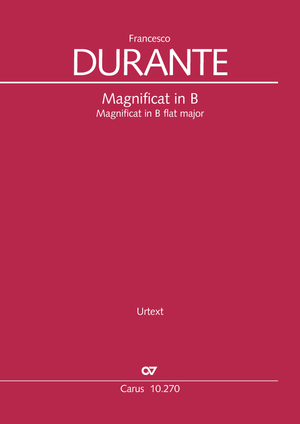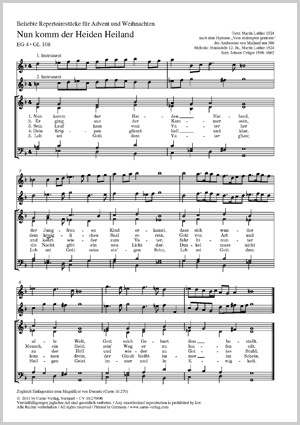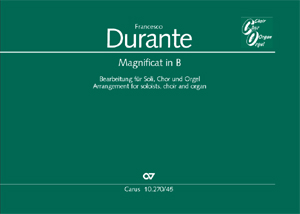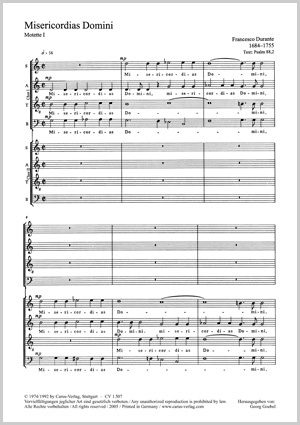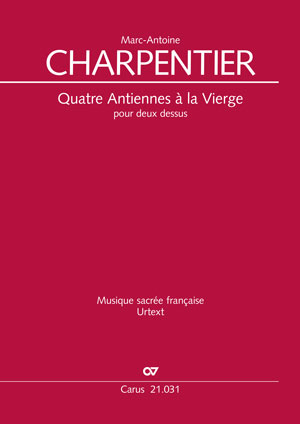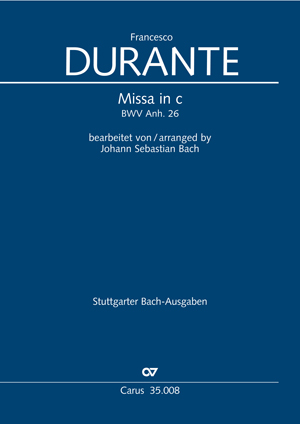Magnificat in B flat major
Francesco Durante (1684–1755) was highly esteemed by his contemporaries, and even at the end of the 19th century he was still described in musical literature as “one of the greatest Italian church composers and composition teachers of all time.” His Magnificat in B flat major is undoubtedly one of his most important compositions and one of the most significant settings of this text in cantata form. It masterfully combines the traditional polyphonic notation with modern, early Classical elements.
Also available as arrangement for choir & organ (Carus 10.270/45).
In addition: 6 choral Christmas settings for choir SATB as inserts: choral score (Carus 10.270/06), choir & organ (Carus 10.270/46).
Also available as arrangement for choir & organ (Carus 10.270/45).
In addition: 6 choral Christmas settings for choir SATB as inserts: choral score (Carus 10.270/06), choir & organ (Carus 10.270/46).
Purchase
Additional product information
-
Composer
Francesco Durante
| 1684-1755Francesco Durante (1684–1755) was highly esteemed by his contemporaries, and even at the end of the 19th century he was still described in musical literature as "one of the greatest Italian church composers and composition teachers of all time." Personal details
-
Editor
Diethard Hellmann
| 1928-1999
-
Vocal score arranger
Gerhard Klumpp
| 1945
Frequent questions about this work
 There are no questions and answers available so far or you were unable to find an answer to your specific question about this work? Then click here and send your specific questions to our Customer Services!
There are no questions and answers available so far or you were unable to find an answer to your specific question about this work? Then click here and send your specific questions to our Customer Services!


